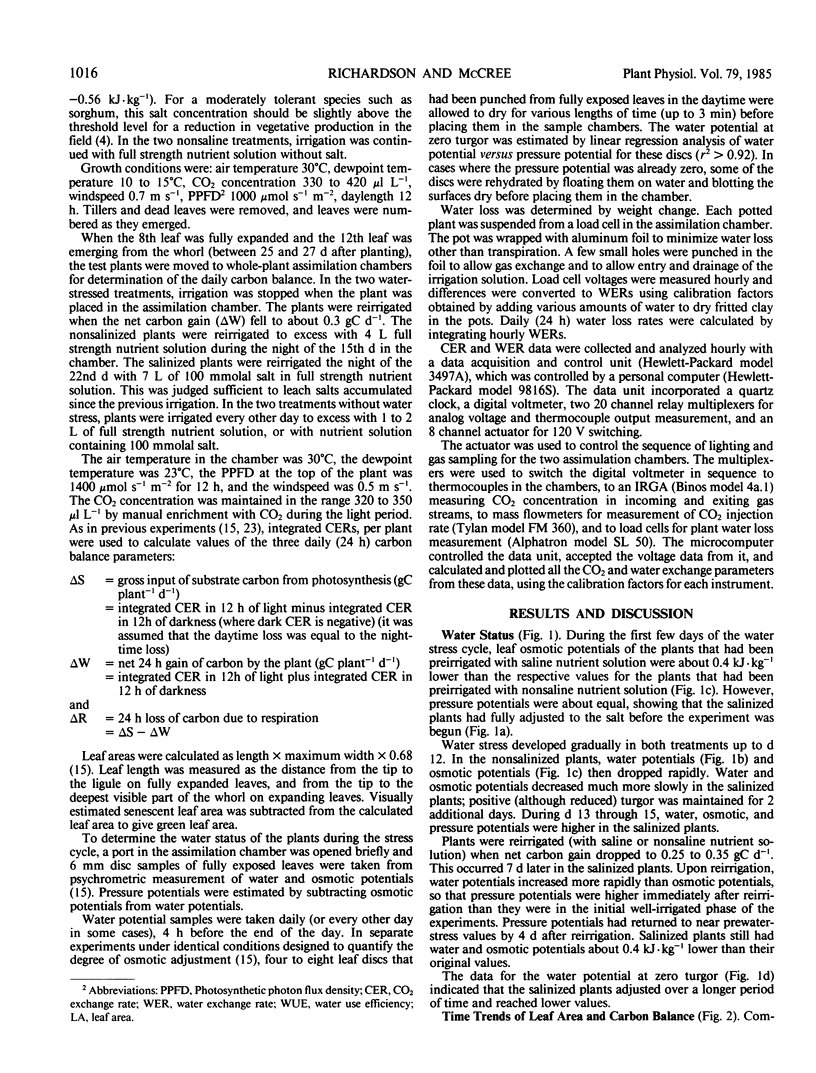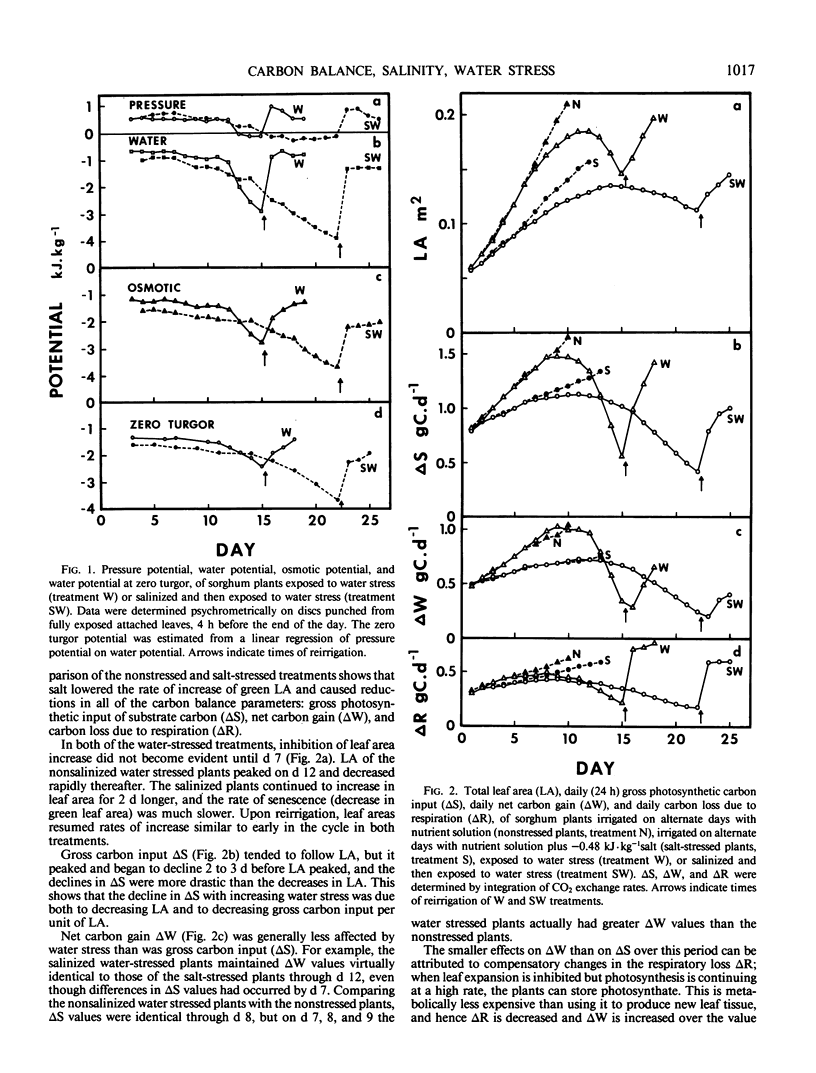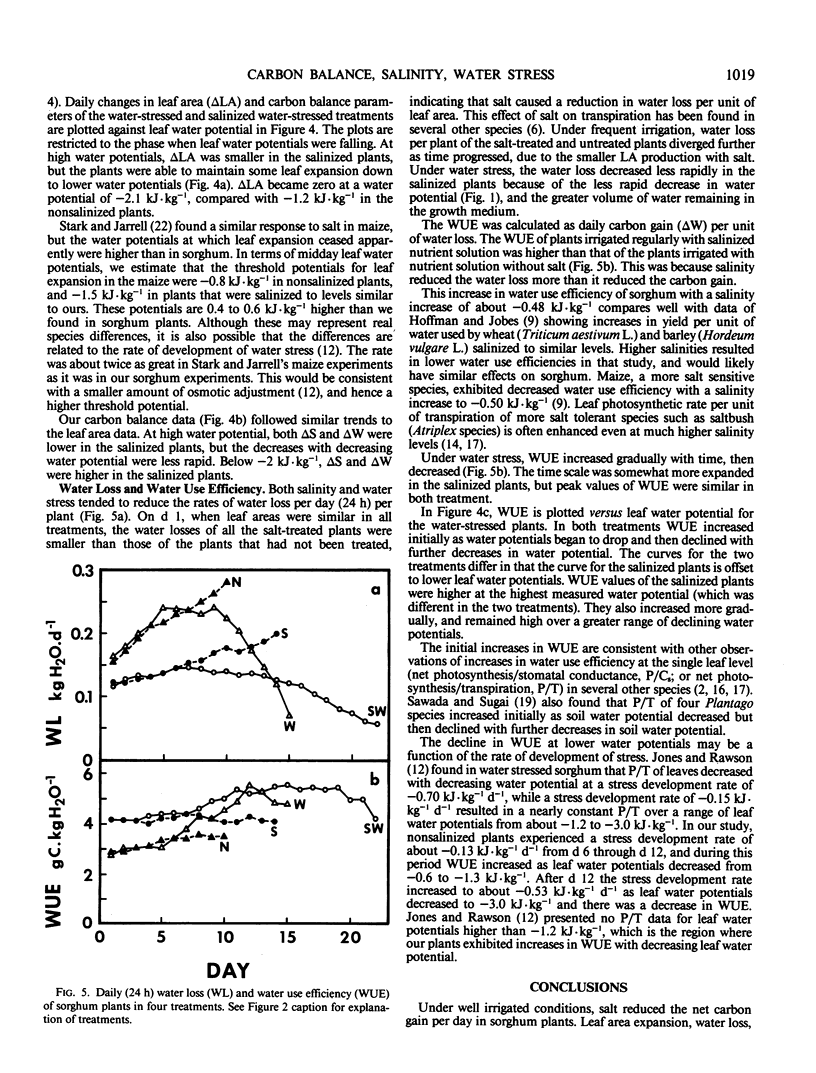Abstract
The daily (24 hour) changes in carbon balance, water loss, and leaf area of whole sorghum plants (Sorghum bicolor L. Moench, cv BTX616) were measured under controlled environment conditions typical of warm, humid, sunny days. Plants were either (a) irrigated frequently with nutrient solution (osmotic potential −0.08 kilojoules per kilogram = −0.8 bar), (b) not irrigated for 15 days, (c) irrigated frequently with moderately saline nutrient (80 millimoles NaCl + 20 millimoles CaCl2·2H2O per kilogram water, osmotic potential −0.56 kilojoules per kilogram), or (d) preirrigated with saline nutrient and then not irrigated for 22 days.
Under frequent irrigation, salt reduced leaf expansion and carbon gain, but water use efficiency was increased since the water loss rate was reduced more than the carbon gain. Water stress developed more slowly in the salinized plants and they were able to adjust osmotically by a greater amount. Leaf expansion and carbon gain continued down to lower leaf water potentials.
Some additional metabolic cost associated with salt stress was detected, but under water stress this was balanced by the reduced cost of storing photosynthate rather than converting it to new biomass. Reirrigation produced a burst of respiration associated with renewed synthesis of biomass from stored photosynthate.
It is concluded that although irrigation of sorghum with moderately saline water inhibits plant growth in comparison with irrigation with nonsaline water, it also inhibits water loss and allows a greater degree of osmotic adjustment, so that the plants are able to continue growing longer and reach lower leaf water potentials between irrigations.
Full text
PDF





Selected References
These references are in PubMed. This may not be the complete list of references from this article.
- Boyer J. S. Effects of Osmotic Water Stress on Metabolic Rates of Cotton Plants with Open Stomata. Plant Physiol. 1965 Mar;40(2):229–234. doi: 10.1104/pp.40.2.229. [DOI] [PMC free article] [PubMed] [Google Scholar]
- Hsiao T. C., O'toole J. C., Yambao E. B., Turner N. C. Influence of Osmotic Adjustment on Leaf Rolling and Tissue Death in Rice (Oryza sativa L.). Plant Physiol. 1984 Jun;75(2):338–341. doi: 10.1104/pp.75.2.338. [DOI] [PMC free article] [PubMed] [Google Scholar]
- McCree K. J., Kallsen C. E., Richardson S. G. Carbon Balance of Sorghum Plants during Osmotic Adjustment to Water Stress. Plant Physiol. 1984 Dec;76(4):898–902. doi: 10.1104/pp.76.4.898. [DOI] [PMC free article] [PubMed] [Google Scholar]


